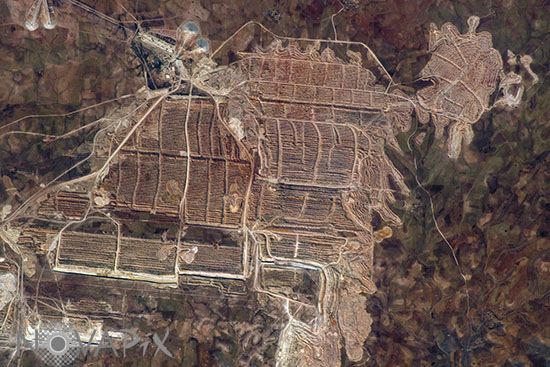Photo Agency - Astronomy - Space - Nature

Bou Craa open-cast phosphate mine - Western Sahara
author: Nasa/Novapix
reference: t-afmar-00003
Image Size 300 DPI: 47 * 31 cm
Phosphate is a prime component of agricultural fertilizer, and Bou Craa is one of the largest phosphate mines in the world.
Parallel trenches are cut into the phosphate deposits to facilitate extraction of the material. The mine is one of the few human patterns visible from space in this almost entirely uninhabited western extremity of the Sahara Desert.
The world’s longest conveyor belt (100 kilomters/60 miles) transports the rock to the coast for shipment to users around the world. Part of the conveyor belt appears near the central crushing facility. The belt structure, which carries 2,000 metric tons of rock per hour, is so long and straight that it has often attracted astronaut attention in this otherwise almost featureless landscape.
Most of the people in this territory either work at Bou Craa or live in the coastal town of El Aaiún, Western Sahara’s largest city. The area of the mine has grown significantly in the past five decades. Thorough reworking of the near-surface rock makes the early excavation patterns unrecognizable today. Image taken from the International Space Station (ISS) in June 2018.
Keywords for this photo:
2018 - AFRICA - DESERT - EARTH - EARTH FROM SPACE - EXPEDITION 56 - MINE - MOROCCO - PHOSPHATE - SAHARA -
Contact : Stéphane Aubin +33-(0)9-51-26-53-76
© Novapix - All rights reserved


